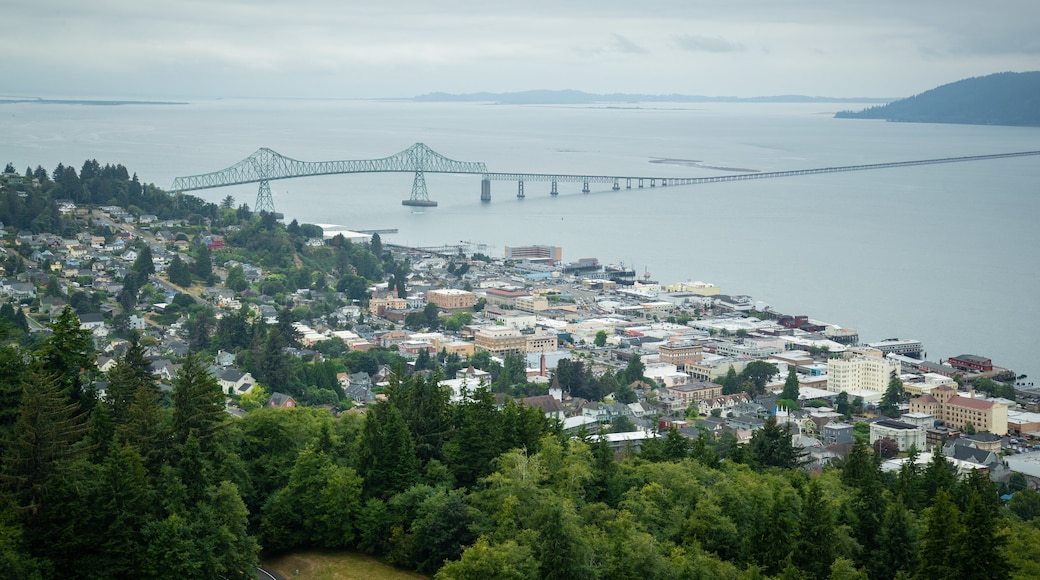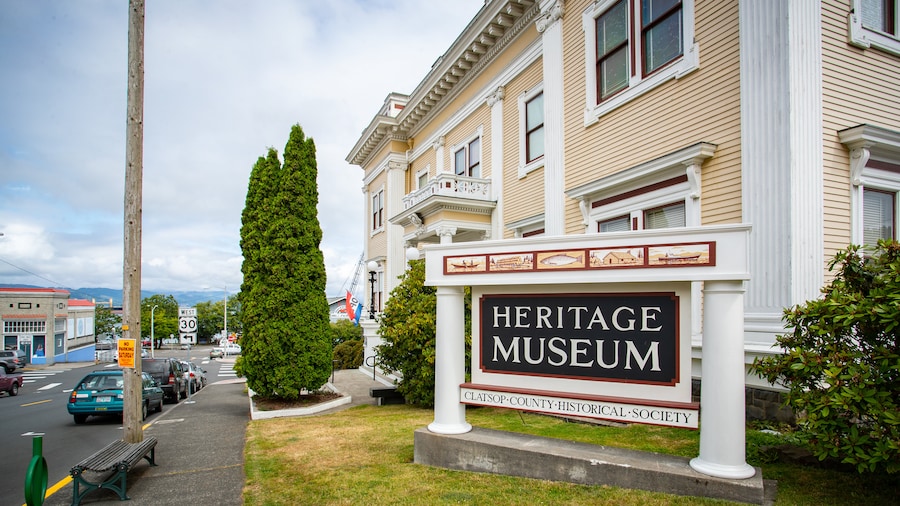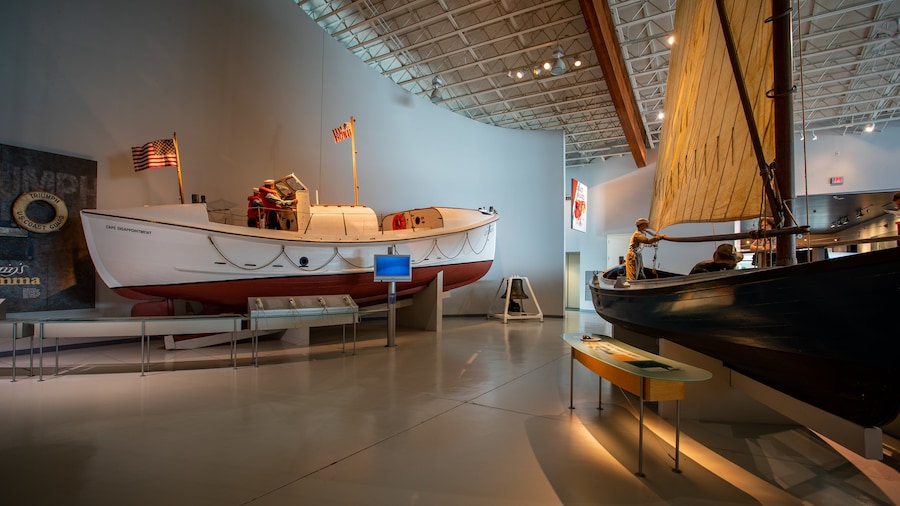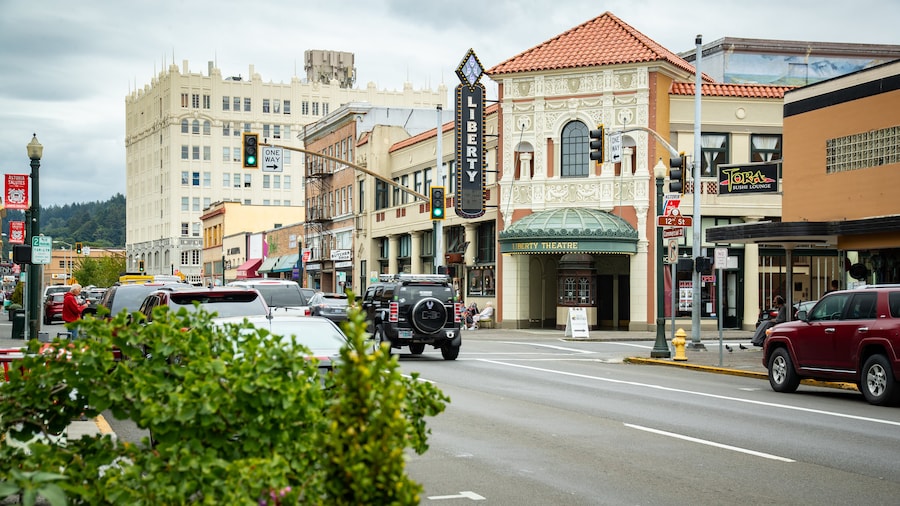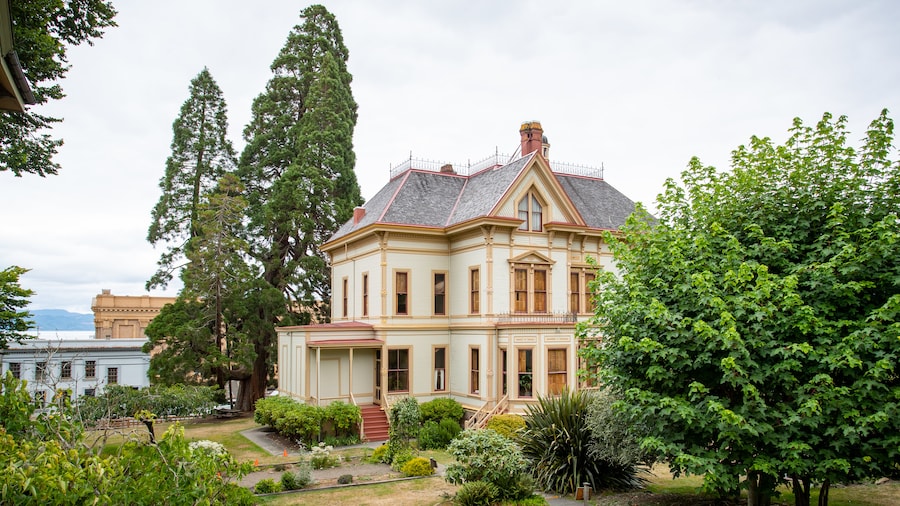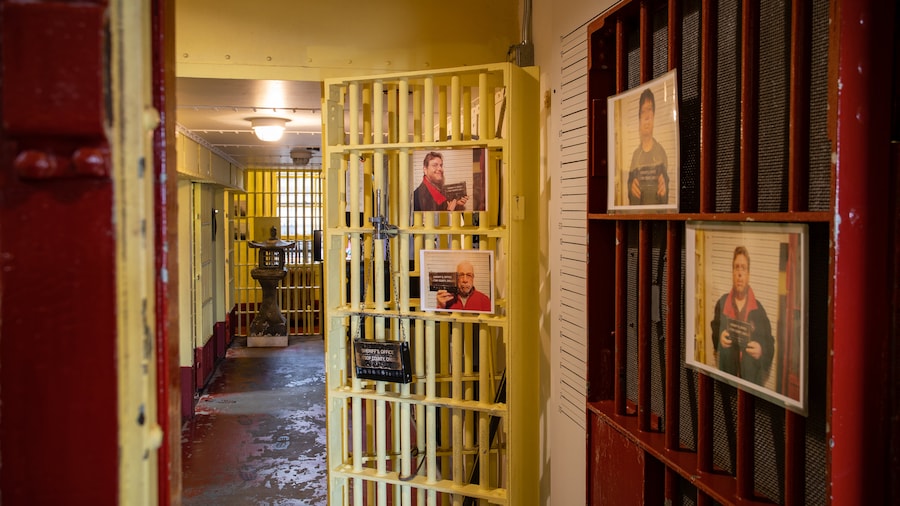Built in 1926, the tall Astoria Column is a major landmark rising over the city of Astoria. Learn about this impressive structure’s history. Discussion of building something on top of Coxcomb Hill began in 1898. Members of the Astoria community were inspired by the construction of the Eiffel Tower in Paris a decade earlier. After the city’s centennial in 1911, specific plans began to take shape for the tower, including a histogram depicting area events.
For the installation completed in 1926, Italian artist Attilio Pusterla created a 525-foot-long (160-meter) mural that wraps around the tower. The attractive sgraffito engraving depicts native Chinook people, Lewis and Clark, John Jacob Astor, Oregon statehood, the arrival of the railroad and other key people and events. However, the images became barely visible after decades of wear. Study the design, which is quite clear today after restorations in 1995 and 2015.
Climb 166 steps to the granite observation plaza at the top of the 110-foot-tall (33-meter) tower. Enjoy panoramic views of Astoria and the Columbia River and launch a small wooden glider from the platform to watch it soar and settle to the ground.
The column is surrounded by a grassy area perfect for picnics. Let kids run around or roll on the lawn. Inspect the replica of the burial canoe for Chief Comcomly of the Chinook Indians, which was added to the site in 1961.
See the column from nearly anywhere in Astoria. During sunny days, watch fluffy white clouds move across the blue sky behind the tower. Look for lightning during rainstorms. At night, view the light shows presented every hour. LED illumination installed by the Friends of Astoria Column let organizers create an infinite variety of lighting designs.
Drive to the Astoria Column on Coxcomb Hill from the center of town in less than 10 minutes. Parking is available for a fee and is good for one year. The tower is free to access and opens from dawn to dusk. Request a docent in advance.
